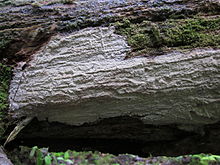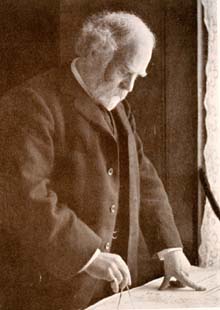
Sir John Murray was a pioneering Canadian-born Scottish oceanographer, marine biologist and limnologist. He is considered to be the father of modern oceanography.

The Polyporaceae are a family of poroid fungi belonging to the Basidiomycota. The flesh of their fruit bodies varies from soft to very tough. Most members of this family have their hymenium in vertical pores on the underside of the caps, but some of them have gills or gill-like structures. Many species are brackets, but others have a definite stipe – for example, Polyporus badius.

Fomitopsis is a genus of more than 40 species of bracket fungi in the family Fomitopsidaceae.
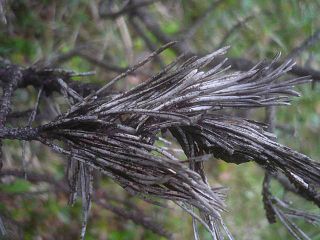
Herpotrichia is a genus of fungi in the family Melanommataceae.

Antrodiella is a genus of fungi in the family Steccherinaceae of the order Polyporales.

Cystostereum is a genus of crust fungi in the family Cystostereaceae. The generic name combines the Greek word κύστις ("bladder") with Stereum.
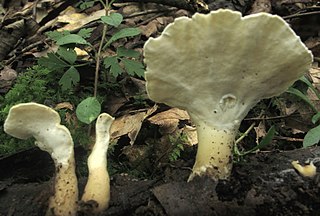
Loweomyces is a genus of six species of poroid fungi in the family Steccherinaceae.
Grammothele is a genus of poroid crust fungi in the family Polyporaceae.
Skepperia is a genus of fungi in the family Thelephoraceae. The genus was described by mycologist Miles Joseph Berkeley in 1857 to contain the type species Skepperia convoluta. The genus was circumscribed by Berkeley in Trans. Linn. Soc. London vol.22 on page 130 in 1857.
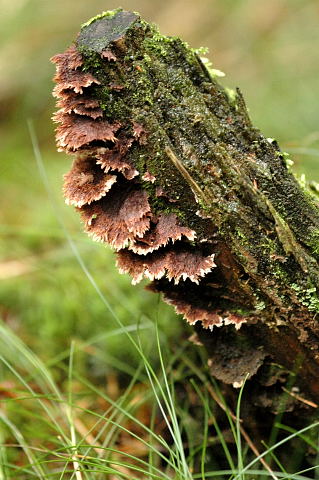
Thelephora is a genus of fungi in the family Thelephoraceae. The genus has a widespread distribution and contains about 50 species. Fruit bodies of species are leathery, usually brownish at maturity, and range in shape from coral-like tufts to having distinct caps. Almost all species in the genus are thought to be inedible, but Thelephora ganbajun is a gourmet fungus in Yunnan province of southwest China.
Michenera is a genus of fungi in the family Corticiaceae. The genus contains four species found in pantropical regions.
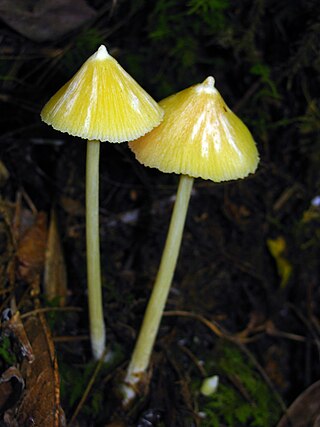
Entoloma murrayi, commonly known as the yellow unicorn Entoloma or the unicorn pinkgill, is a species of fungus in the Entolomataceae family. First described from New England (USA) in 1859, the species is found in eastern North America, Central and South America, and southeast Asia, where it grows on the ground in wet coniferous and deciduous forests. The fungus produces yellow mushrooms that have a characteristic sharp umbo on the top of a conical cap. The mushroom is inedible and may be poisonous. Other similar species can be distinguished from E. murrayi by differences in color, morphology, or microscopic characteristics.
Pluteus aethalus is a species of agaric fungus in the family Pluteaceae. It is found in Cuba. The species was originally named Agaricus aethalus by Miles Joseph Berkeley & Moses Ashley Curtis in 1869, and later transferred to the genus Pluteus by Pier Andrea Saccardo in 1887. It is classified in Pluteus section Celluloderma, subsection Mixtini.
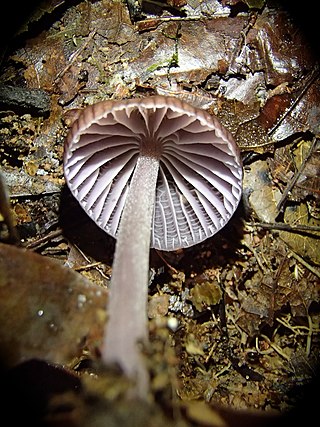
Mycena holoporphyra is a species of agaric fungus in the family Mycenaceae. It was first described by Miles Joseph Berkeley and Moses Ashley Curtis in 1868 as Agaricus holoporphyrus. Rolf Singer transferred it to the genus Mycena in 1962, where it is classified in the section Calodontes. First described from Cuba, it is also found in Trinidad, Africa, Mexico, and Central America and South America.Nicolas Niveirio, Orlando F. Popoff, and Edgardo O. Alberto, classify Mycena Holoporphyra for their distinguishable basiodiocarps that are violet or purple, having a radish like smell, fungal tissues, and a lack of pleurocystidia. In addition, Pegler, describes the species as having a pale cream spore print with spores of ellipse cylindrical to oblong cylindric, hyaline and deeply amyloid.

Loweomyces fractipes is a species of poroid fungus in the family Steccherinaceae, and the type species of the genus Loweomyces. It is a widely distributed species, found in North America, Europe, Central America, South America, and Korea.
Cerocorticium molle is a species of crust fungus in the family Meruliaceae.
Costantinella is a genus of anamorphic fungi in the family Morchellaceae and class Pezizomycetes

Ionomidotis is a genus of fungi belonging to the family Cordieritidaceae.
Microcera is a genus of Ascomycete fungi in the Nectriaceae family.
